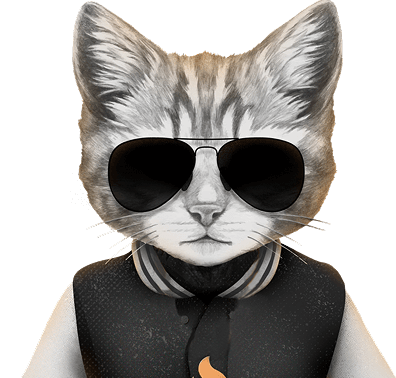
In this article, we want to give marketers a better understanding of which industries are a natural fit for virtual influencers, and what kinds of campaigns have worked, or failed, in the past. By laying out those patterns, we hope marketers can think more critically before going all-in on virtual creators. We’re not here to promote or reject the trend. We’re here to offer context, real examples, and platform insights so you can decide if a virtual influencer actually fits your brand.
Virtual influencers exploded onto social feeds because they look perfect, work 24/7, and shout “future-ready.” Yet the same digital polish can backfire in sectors that trade on lived experience and trust. This article explores where virtual influencers make sense, where they fall short, and what brands should weigh before adding one to their strategy.
They became widely popular among young digitally-native generations prompting brands to include them in their marketing endeavors. But, again, virtual influencers are double-edged swords. For some industries, they generate buzz and increase sales, but alienate potential customers for other industries.
Is your business one of those that can leverage virtual entities in its campaigns or should you avoid featuring them? This article will answer the question and additionally, we’ll provide you with several fruitful and unsuccessful campaign examples. So, without further ado, let’s jump right into it!
Key takeaways:
Virtual influencers offer full creative control, predictable output, and zero personal risk; but no real lived experience.
They work best in campaigns focused on product visuals, brand storytelling, or futuristic themes.
Brands in fashion, tech, and entertainment have seen success; but those in wellness, social justice, or lifestyle often face credibility gaps.
Virtual influencers require long-term creative planning and transparency to avoid backlash or confusion.
Industries That Could Profit from Virtual Influencers
Fashion and Beauty
Besides placing a lot of weight on aesthetics, visuality, and perfection, the Beauty and Fashion industries are two fields where being experimental and bold isn’t frowned upon. That’s why virtual influencers can flourish in them. They are already picture-perfect and immaculate, plus they can be infinitely customized to match the signature style of a brand.
Computer-generated influencers can showcase the most extravagant colors, shapes, and fashion trends. Their looks can be tailored to diverse campaigns, product lines, or seasonal trends.
Gaming and Tech
Two sectors where innovation meets technology and forward-thinking is a must. These traits are key for user experience. Virtual characters seamlessly fit into this ecosystem. They prove the brand’s capability of adopting cutting-edge technologies.
Tech and Gaming audiences are young and tech-savvy users themselves. Digital interactions and computer-created figures aren’t a novelty for them. Virtual characters can be ideal brand ambassadors for video games and consumer electronics products.
Entertainment, Music, and Media
Virtual influencers are weariless, always available, and flexible. They may be fashionistas but they “have the energy” and time to excel as musicians or actresses as well. The entertainment industry and the media are already interconnected with digital culture. They leverage trends, memes, and creative viral content, so working with virtual creators is just a stone’s throw away.
CGI creators can be put in any scenery, even fantastical settings and virtual environments. They can do stunts humans never will be able, hence they can lend originality and uniqueness to their storytelling.
Automotive
These days, the automotive sector increasingly relies on technological developments. EVs are in demand just like smart driving, connectivity, and self-driving cars. Virtual creators can highlight these advanced features and showcase the automobile industry’s futuristic advancements in unusual ways.
While virtual influencers can elevate a brand’s marketing campaign, businesses still have to analyze their performance and audience and make sure that the CGI creator’s tone and voice match theirs. Download our virtual influencer guide and arm yourself with key insights on popular virtual creators, their follower dynamics, top categories, and performance indicators.
Industries That Should Avoid Working with Virtual Influencers
Healthcare
Health and well-being are personal and sensitive topics, therefore the audience wants relatable interactions. Healthcare is an industry where authentic relationships and trust between the audience and the provider are essential. It is a field where vulnerability, empathy, and real-life experiences count, not controlled, stylized appearances.
Since virtual influencers are managed by brands or agencies audiences would question their credibility and reliability. Consumers are more likely to connect with content where real people discuss their health experiences and recovery stories. CGI creators have no such experience.
Financial services
The Finance industry includes banking, investing, and insurance. Obviously, consumers trust reliable institutions and professionals with their savings and assets. People who work in the financial sector must have an extensive understanding of the complex products they promote. Trust and credibility are built on their expertise and experience.
Virtual creators - no matter how well-educated they are created - don’t have real experience. They don’t face financial problems and don’t have to manage their money or pay back loans. On top of that, financial services are strictly regulated. The public will question the sincerity and transparency of brands that partner with software-created characters.
Local businesses
Small, family-run businesses lean on personal relationships and the local community’s trust. This is something virtual influencers can’t recreate. Businesses that operate in a specific area must cooperate with individuals who grew up in that area, and have local experience, and memories that attach them to it. Virtual creators lack this familiarity.
Non-Profit organizations
Often involved in humanitarian, social, and environmental causes, non-profit organizations are better off with real people who are passionate about the same ideas. Again, they rely on real human stories, and emotional storytelling to raise awareness and drive donations. Unfortunately, virtual influencers don’t have the emotional depth and empathy to represent human-centered issues.
Virtual influencers are not a one-size-fits-all solution, especially for brands that need intimate relationships, specific knowledge, or emotional connections. Still, these sectors can also thrive if they team up with human content creators. For them, we have compiled a free downloadable guide on how to find influencers in 2024.
Successful and Ill-Fated Marketing Campaigns with Virtual Creators
Success story #1: Lil Miquela x Samsung’s Galaxy Z Flip 3 Launch
For the introduction of the first smartphone featuring a foldable screen, Samsung teamed up with virtual influencer Lil Miquela. The CGI creator shared a few Instagram posts using the phone, highlighting the innovative features and advanced camera.
Success story #2: Shudu, Margot, and Zhi x Balmain
Luxury fashion brand, Balmain created a “virtual army” of models when they hired Shudu, Zhi, and Margot for a 2018 campaign. Balmain wanted to redefine the boundaries of traditional fashion representation, blending the virtual world with high fashion. Plus, they used models with diverse backgrounds trying to stress the importance of diversity.
Doomed campaign #1: Lil Miquela x Black Lives Matter
Lil Miquela supported the Black Lives Matter movement in a few Instagram posts. As a scripted character, her actions are controlled by a start-up. She lacks any lived experience of racism and social injustice therefore her talking about it raised questions about whether it is appropriate for virtual characters to partake in such movements.
Doomed campaign #2: Seraphine x Riot Games
Riot Games used Seraphine, a League of Legends character and virtual influencer when they released a new playable character. Seraphine’s posts about self-doubt and mental health problems lead to controversy among fans. Of course, many argued that a fictitious character couldn’t have real emotions and can’t struggle with personal problems.
Conclusion: Virtual Entities Aren’t a Universal Solution
Although a unique and powerful marketing strategy, virtual creators aren’t suited for every business. After reading the article, it’s easy to conclude what businesses are more likely to succeed with virtual influencers and which are not.
Consider collaborating with CGI characters if:
Your brand is forward-thinking, and innovative, and already uses technological advancements and AI.
Your products enable you to experiment with styles and tones.
You want to specifically highlight the futuristic or unique design of your products.
You can and want to leverage augmented or virtual reality in your promotions.
You detect that your audience is perceptive of virtual creators.
Think twice before teaming up with computer-generated figures if:
You operate in an industry where real-life or personal experience is essential.
You must build your promotion on emotional connection.
You champion social issues and causes that again involve personal understanding.
Your product presentation requires any of the five senses - especially smelling, tasting, and touching.










